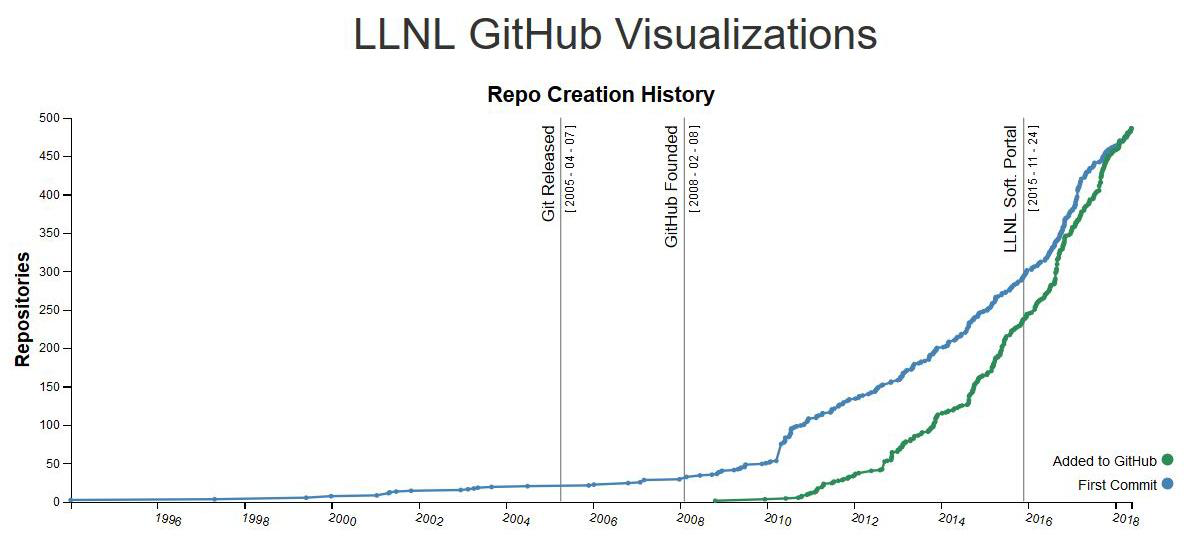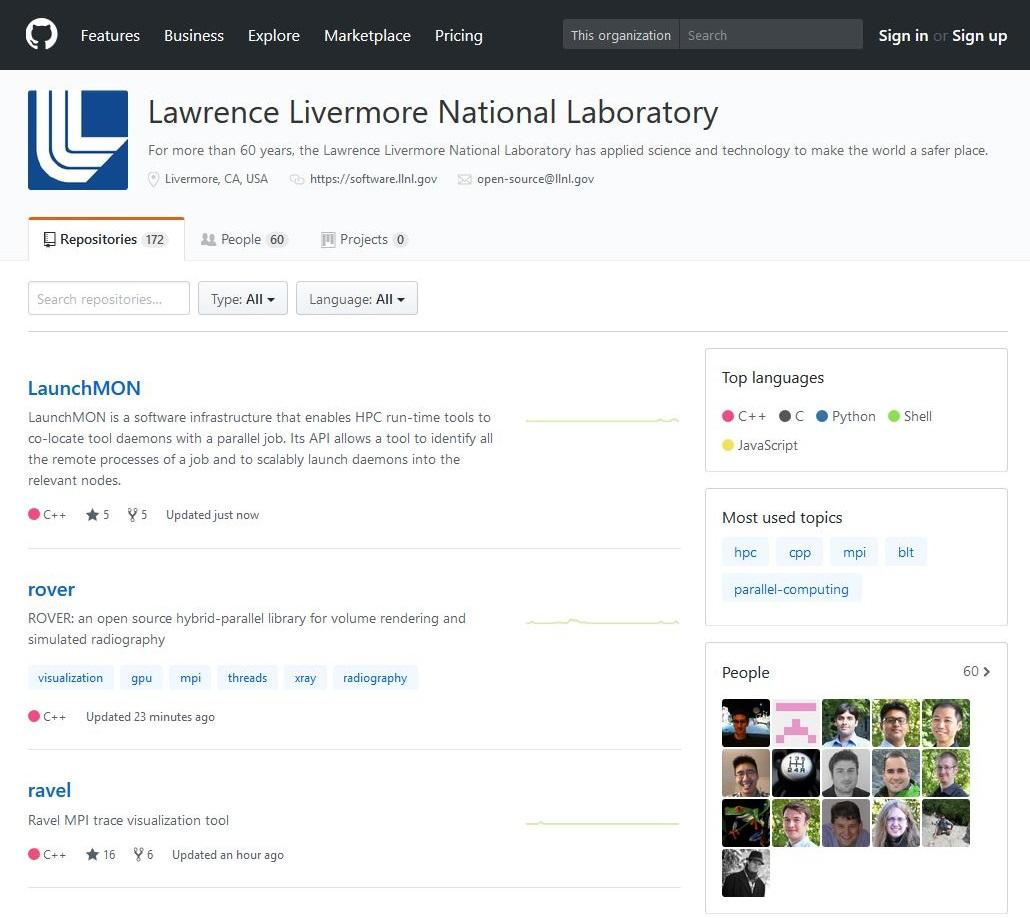Editors note: This is a guest post by Ian Lee. Ian is a computer engineer committed to improving Lawrence Livermore National Laboratory’s engagement with the open source software community.
Software is everywhere at Lawrence Livermore National Laboratory (LLNL). As a Department of Energy (DOE) lab, we contribute to the National Nuclear Security Administration’s (NNSA’s) stockpile stewardship mission while strengthening national and global security with a range of programs in fields like counterterrorism, biosecurity, and energy. Researchers both inside and outside the Lab rely on our high-performance computing (HPC) center to advance science and technology. Our software developers produce millions of lines of code every year to support these goals.
Much of our software portfolio is open source. We began releasing software in the 1990s — long before the Federal Source Code Policy required government institutions to make their code available to each other and to release at least 20 percent to the public. The advent of hosting services like GitHub increased exposure of open source code. We launched a software portal in 2015 to provide additional access and track overall trends. Thanks to growing institutional support over the last 10 years, our involvement with the open source community has taken off.

Our software addresses just about every key computing need: compilers, package managers, data analysis tools, visualization tools, input/output benchmarking, data storage, parallel performance, workload management, math and physics codes, and more. We work in multiple operating systems and programming languages.
Win–wins
As 18F points out, adopting an open source policy has many benefits. Government agencies — especially those with HPC centers, like LLNL — are trying to solve similar problems. With open source software, agencies and contractors can align their goals and make the most of external resources. We can share projects and avoid redundancies. (After all, not everyone can build and support their own football field–sized supercomputing facilities.)
For example, we’re developing open source tools with the NNSA’s Advanced Simulation and Computing Program to make HPC codes portable to next-generation architectures. The DOE’s Exascale Computing Project depends on open source technology to share work among participating institutions, including LLNL and other national labs.
One of our most popular open source HPC projects is ZFS on Linux, which, as the name states, is a version of the ZFS file system that supports the Linux operating system. Embodying the community’s quid pro quo, we could adapt the software to Linux because the original ZFS (which only supported the Solaris operating system) was open source.
We create software that resonates with the open source community due to its flexibility with a variety of use cases. LLNL’s Spack, a collection of recipes for managing software packages, averages hundreds of downloads every day. High usage combined with external contributions make it incredibly stable and widely relevant to many platforms, languages, and simulation frameworks. Users like Spack because it works well, and it works well because users actively participate in its development. It’s cost-effective, too: We improve the quality and portability of our software when users are willing to test it for free.
Open source software also demonstrates a developer’s skills. Just as a scientist can publish research papers, a software developer can release projects. Moreover, we’re seeing a rise in scientific papers that cite open source code to encourage reproducibility. When your code is available for anyone to check, your personal standards go up. This professional investment works both ways. We’ve interviewed a few dedicated contributors after seeing what they did with our code.
Additionally, many developers are motivated to give back to the community. We contribute to other institutions’ open source projects (such as the Department of Homeland Security and 18F), and collaborators value our perspective and needs as a national lab.

Growing pains
Today, releasing software as open source is LLNL’s default position when the content isn’t classified or controlled. That wasn’t always the case; the cultural shift took some time.
One common argument is relevance. Why do we deliberately produce software for public consumption? Because the potential for new discoveries and applications is too great to ignore. For instance, the Earth System Grid Federation started two decades ago as a data-sharing project between DOE labs. Now it’s an award-winning collaboration among agencies and researchers all over the world who work in Earth system science. The project’s software modules are (necessarily!) open source.
Ultimately, our senior management saw that an open source strategy directly affects LLNL’s missions by improving our software development and HPC capabilities. They support several grassroots activities around the Lab, like hackathons, that nurture open source development. Management’s buy-in is essential, plus it’s great for morale.
Another challenge is finding the sweet spot within an institution’s release policy. The ideal release policy acknowledges that open source software will continue to be developed. It’s not a one-and-done activity, nor can you conduct a lengthy release process for every commit. (Spack, for instance, receives hundreds of commits a day.) At LLNL, we’re working toward a realistic release policy with appropriate expectations for approval and ongoing maintenance.
We’ve started to work with other government agencies and contractors that want to become part of the open source community. Even if your agency doesn’t develop code, you can benefit from incorporating open source tools — which are usually well supported and well documented — into your software stacks. To learn more about LLNL’s open source software, check out our portal, explore our projects on GitHub, and follow us on Twitter @LLNL_OpenSource.
This work was performed under the auspices of the U.S. Department of Energy by Lawrence Livermore National Laboratory under Contract DE-AC52-07NA27344 (LLNL-WEB-753159).

